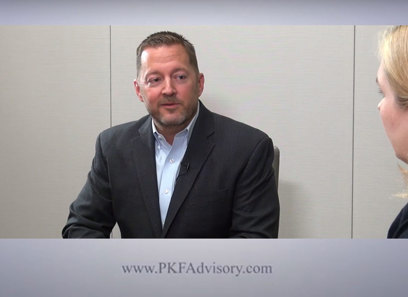The Function of Mergers and Acquisitions fit Market Patterns and Developments
Mergers and acquisitions have significantly come to be a vital mechanism for companies looking for to navigate the complexities of modern markets. By merging resources and experience, business can not only enhance their affordable side yet additionally catalyze advancement through collaborative harmonies. As markets come to grips with fast technical developments and moving customer demands, recognizing the ramifications of M&A strategies uses valuable understandings right into future patterns. Yet, the concern remains: exactly how do these strategic actions genuinely influence the trajectory of entire fields?
Recognizing M&A Dynamics
Mergers and acquisitions (M&A) regularly act as crucial methods for business looking for growth, competitive benefit, or market loan consolidation. Recognizing the characteristics of M&A is necessary for both professionals and stakeholders in browsing the facility landscape of company transactions. M&A processes usually include a number of stages, consisting of target recognition, due persistance, settlement, and integration, each carrying its own obstacles and risks.
The inspirations behind M&A can differ dramatically; firms might pursue these methods to access new markets, obtain innovative innovations, or achieve operational synergies. In addition, changes in regulative atmospheres and economic conditions can influence M&An activity, motivating companies to adjust their strategies appropriately.
Successful implementation of M&A transactions requires a detailed understanding of the cultural, monetary, and operational effects entailed. Business have to analyze not just the quantitative facets, such as assessment and financial performance, yet additionally the qualitative factors, consisting of company society and worker view. Inevitably, the ability to properly handle these dynamics can establish the success or failing of an M&A campaign, emphasizing the demand for tactical preparation and notified decision-making throughout the procedure.
Effect on Market Competitors
The results of mergings and procurements on market competitors can be profound, frequently reshaping industry landscapes. When business combine, they often improve their market power, allowing them to set costs extra openly and determine terms to distributors and customers. This enhanced power can cause minimized competition, as smaller gamers might struggle to contend versus the incorporated resources and abilities of the joined entity.
Furthermore, M&A tasks can lead to market concentration, where fewer firms control the industry. The competitive implications of mergers and acquisitions are not widely negative.

Technology With Collaboration
Collaboration in between firms can act as a substantial driver for advancement, enabling companies to take advantage of each other's toughness and resources. They produce a productive ground for the growth of brand-new concepts, products, and modern technologies when companies integrate their competence. This synergy commonly causes improved problem-solving abilities, enabling companies to take on complicated obstacles that would be hard to attend to independently.
Furthermore, joint efforts can speed up the research and advancement procedure. By merging their technical capabilities and intellectual funding, business can significantly decrease time-to-market for cutting-edge remedies. This is particularly obvious in sectors where rapid technological innovations are critical, such as telecoms, pharmaceuticals, and infotech.
In addition, partnerships created through acquisitions and mergings can promote a society of development - Mergers and Acquisitions. When workers from different histories and ability collections integrated, they add varied viewpoints that can inspire imagination and cause development technologies. This joint atmosphere not just boosts employee spirits yet likewise improves retention prices, as individuals feel more taken part in a vibrant workplace
Sector-Specific Trends
Industry characteristics are significantly shaped by sector-specific patterns that affect the techniques and outcomes of mergings and purchases. Different markets are experiencing special pressures and opportunities, motivating business to go after M&A as a calculated tool to resolve these difficulties.
In innovation, the rapid pace of innovation and electronic improvement drives firms to get startups to boost their abilities and expand their item offerings. In a similar way, the healthcare market is witnessing consolidation as organizations look for to boost functional performances and expand their service varieties in response to regulative modifications and progressing patient needs.
The consumer goods sector is also undergoing significant adjustments, with sustainability becoming a crucial focus. Mergers and acquisitions are being leveraged to integrate eco friendly methods and items, aligning with consumer preferences and regulatory assumptions.
In money, the surge of fintech is triggering traditional establishments to acquire ingenious technology firms to continue to be competitive and boost client experiences. These sector-specific fads not just dictate the nature of M&A task yet likewise highlight the need for companies to continue to be nimble in an ever-evolving market landscape. Understanding these fads is crucial for stakeholders to expect shifts and leverage possibilities effectively.
Future Overview of M&A
A Economic factors influencing M&A transformative era is on the horizon for acquisitions and mergers, driven by technical innovations, regulatory adjustments, and moving consumer habits. Business are progressively leveraging information analytics and man-made knowledge to identify prospective targets and improve due diligence processes, improving decision-making effectiveness. This technical integration not only increases deal timelines yet likewise improves the accuracy of assessments.

As customer choices continue to develop, especially towards sustainability and electronic interaction, services will look for procurements that straighten with these patterns. Business concentrating on eco-friendly technologies or electronic systems are expected to end up being attractive targets, mirroring a broader industry dedication to thrive and adjust in altering market conditions.
Eventually, the future of M&A will certainly be identified by agility and responsiveness, as companies acknowledge the need of critical partnerships to stay competitive. The landscape will prefer those who can successfully align their goals with emerging trends while stabilizing regulative complexities and technological advancements.
Final Thought
By assisting in source sharing and experience integration, M&A campaigns drive operational performances and accelerate the advancement of brand-new innovations. As sectors proceed to progress in reaction to consumer demands and market changes, the calculated search of M&A will certainly continue to be important in forming future trends and fostering lasting growth.
As sectors grapple with quick technical innovations and shifting customer needs, understanding the effects of M&A techniques uses valuable insights into future patterns.Mergers and procurements (M&A) regularly serve as crucial strategies for business seeking development, affordable advantage, or market loan consolidation.Furthermore, M&A tasks can lead to market focus, where fewer firms control the market. These sector-specific trends not just determine the nature of M&An activity however additionally highlight the requirement for firms to continue to be dexterous in an ever-evolving market landscape. As sectors continue to advance in action to customer needs and market changes, the calculated quest of M&A will certainly continue to be vital in shaping future trends and fostering lasting development.